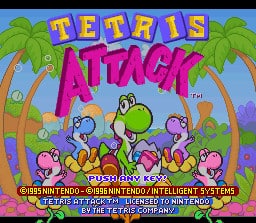It’s pretty much impossible to determine which video game deserves the title of most famous game of all time. The history of the industry is full of titanic names like Mario, Grand Theft Auto, and Legend of Zelda which all loom large in the minds of video game fans. Another strong contender, of course, is Tetris. This legendary puzzle game first appeared in 1985 and it has been an inescapable facet of the video game world ever since. The icon has inspired countless imitators, ports, remakes, spiritual successors, and other titles hoping to ride its coattails. Games like Tetris Effect and Tetris 99 stand on their own two feet, while older titles, like 1995’s Tetris Attack, have surely fallen by the wayside.
Tetris Attack Premise
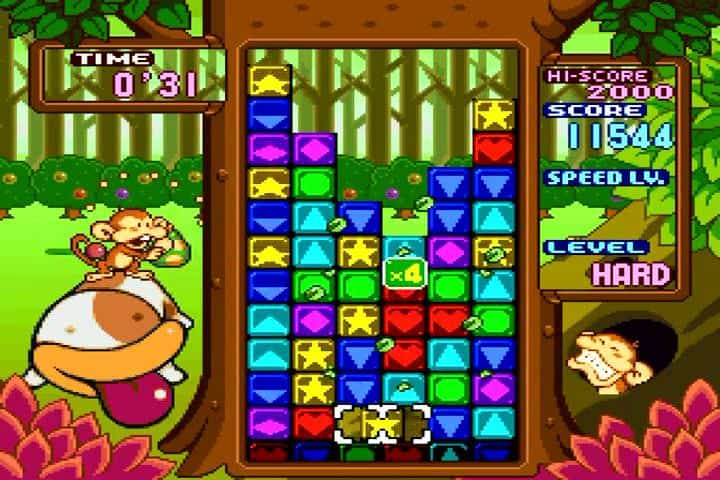
Otherwise known as Panel de Pon, Tetris Attack was a Japanese title that launched on the Super Nintendo and came out for the Game Boy a year later. Despite the name, it does not play like a traditional Tetris game. You use a cursor to rearrange colored blocks, and if three or more matching blocks touch, they disappear. The blocks constantly rise up from the bottom of the screen, with new ones appearing under to push them up. You still lose if the blocks reach the top of the screen, but unlike in Tetris, no blocks ever actually drop down from the top for you. This makes it a completely different game, with a rather tenuous link to the gaming juggernaut that shares its name.
Another odd thing about Tetris Attack is its release history. When it first launched in 1995 it was exclusive to Japan, and given the aforementioned title Panel de Pon. It went international the following year, around the same time the Game Boy port was released. But the international version had some very surprising differences. Not only did it carry the name Tetris Attack, it replaced the original characters and fantasy themes present in the original version with creatures from Super Mario World 2: Yoshi’s Island. This means that non-Japanese audiences had a title that was inextricably linked to two different intellectual properties that the original version completely lacked.
Tetris Attack Main Characters
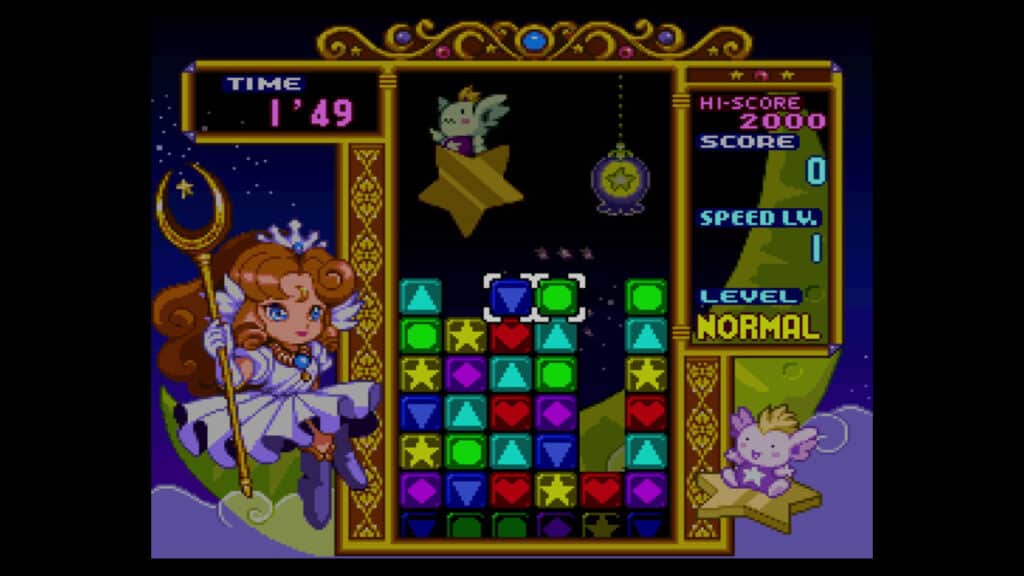
It’s hard to talk about characters in Tetris Attack. After all, you might meet a completely different roster of characters depending on which version you have. As previously mentioned, the recognizable Mario figures seen in the North American version are a completely new addition. The original version of the game has a long roster of fairies and other mythical creatures in its place. Furthermore, since Tetris Attack is a puzzle game, these characters don’t actually interact much. There isn’t a lot of story to speak of, and not much dialogue outside the tutorial. That said, here is a full list of the characters you’ll encounter in Panel de Pon, the original Japanese version of the game. You can also see their Mario-themed replacements in Tetris Attack.
- Lip: The main character, seen in the Starting Point and the majority of the game. Replaced by Yoshi.
- Windy: Seen in Stage 1 and replaced by Lakitu.
- Sharbet: Seen in Stage 2 and replaced by Bumpty.
- Thiana: Seen in Stage 3 and replaced by Poochy.
- Ruby: Seen in Stage 4 and replaced by Flying Wiggler.
- Elias: Seen in Stage 5 and replaced by Froggy.
- Flare: Seen in Stage 6 and replaced by Gargantua Blargg.
- Neris: Seen in Stage 7 and replaced by Lunge Fish.
- Seren: Seen in Stage 8 and replaced by Raphael the Raven.
- Phoenix: Seen in Stage 9 and replaced by Hookbill the Koopa.
- Dragon: Seen in Stage 10 and replaced by Naval Piranha.
- Sanatos: Seen in Stage 11 and replaced by Kamek.
- Corderia: Seen in Stage 12 and replaced by Bowser.
Tetris Attack Titles In The Series
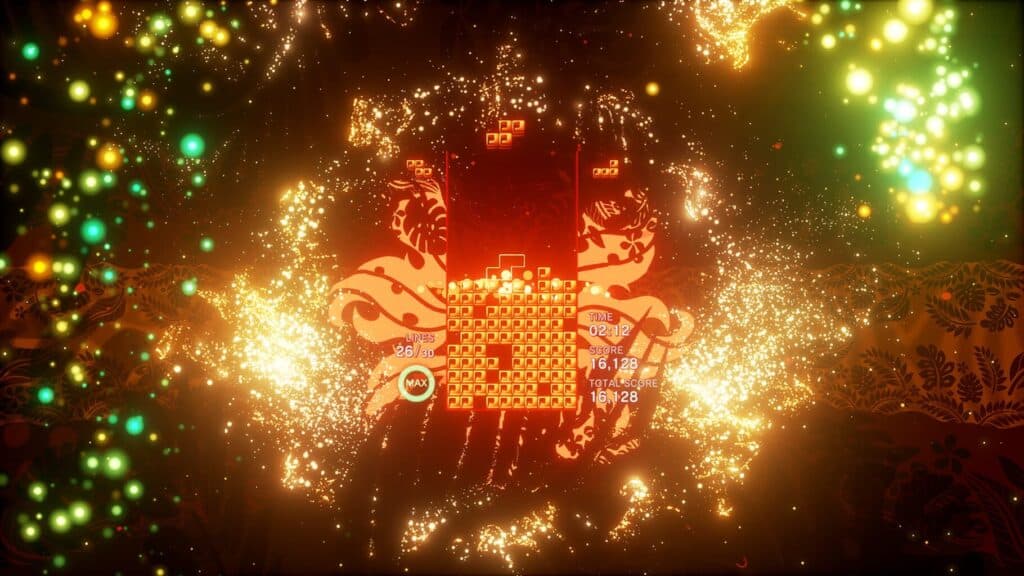
It’s hard to say whether Tetris Attack even belongs in a series. The name might mark it as a Tetris game, but the gameplay and setting are entirely unconnected from the iconic puzzler. In an interview with Destructoid, Tetris Company co-founder Henk Rogers admitted that the name Tetris Attack was simply a marketing decision. Furthermore, he actively regrets giving Nintendo the license, complaining that it diluted the brand. In the words of one of the highest authorities possible on the matter, Tetris Attack is not a Tetris game.
The presence of Yoshi’s Island characters is likely a similarly cynical marketing decision. Bowser and Yoshi’s appearance in Tetris Attack is essentially themed wallpaper over the characters of Panel de Pon, and as such, it would be a stretch to call the game part of the Mario franchise either. If you enjoyed Tetris Attack and want more puzzle games like it, you can certainly move on to Tetris, as there’s likely a version accessible to you on whatever device you prefer. Nintendo does have a history of similarly enjoyable puzzle games, like Dr. Mario and Wario’s Woods. When it comes to connecting to a larger series, however, Tetris Attack must stand alone.
Tetris Attack Cheat Codes
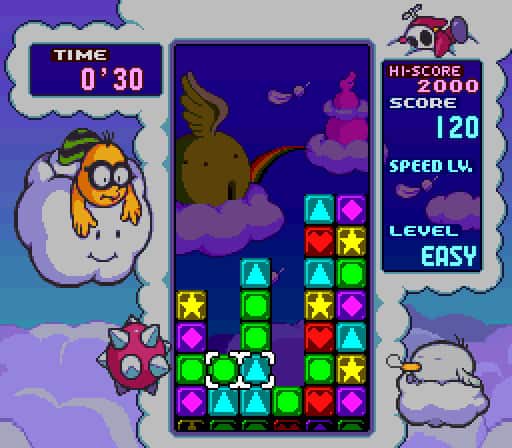
There are a few cheat codes to be found in Tetris Attack. The list is rather small, but fortunately, there are other options. Like a lot of other games of the era, Tetris Attack uses a password system to save progress. With the right password under your belt, you can skip straight to whichever level you’d like. This system was originally used just to pick up where you left off, but with a complete list, the world is your oyster. You can find a full list of Tetris Attack level passwords at GameFAQs, which is also the source for the following cheat codes.
- Non-Stop Play: As the game loads in, press B, A, L, L to unlock an endless mode, where the blocks will never stop rising.
- Play as a Defeated Character: After Yoshi defeats a stage, hold down the X and Y buttons, then press start.
- Play as Boss Characters: On the two-player character select screen, both players must tap the L and R buttons at the same time.
- Super Hard Mode: While starting a new 1-player Versus mode game, highlight the Hard difficulty selection, then hold up plus the L button and press A.
- Play as Yoshi’s Friends: After finishing the first level in 1-player Versus mode, press X and Y simultaneously.
Tetris Attack FAQ
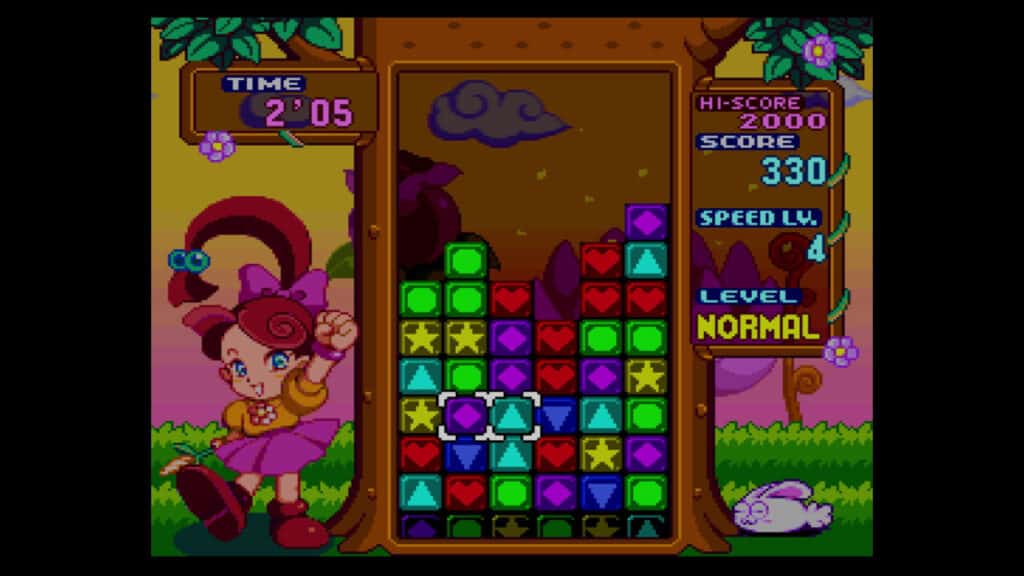
How can I play Tetris Attack? It’s been many years, and the Super Nintendo and Game Boy are now both very old and rare consoles. It’s near impossible to find an original device, which makes both Tetris Attack and its original form, Panel de Pon, very hard to play on their original devices. Fortunately, there are options. Panel de Pon, the original Japanese version of the game, is currently available as one of the NES games you can play on the Switch if you’re a member of Nintendo Switch Online. Due to the contentious nature of the game’s American name, the Tetris Attack version starring Yoshi and friends is going to be much harder to access, but if the gameplay is what you’re after, Panel de Pon is there for you.
Why is it called Tetris Attack? The origin of the game’s misleading name as a marketing stunt has already been discussed. What’s interesting, however, is that this isn’t even the last name the game would receive. A third version of the game would later appear on the Satellaview, and this one was named BS Yoshi’s Panepon. This third title for the game sets aside the product’s erroneous claim to the Tetris legacy, but further distances it from its original roots as a simple, standalone puzzle game about fairies.
